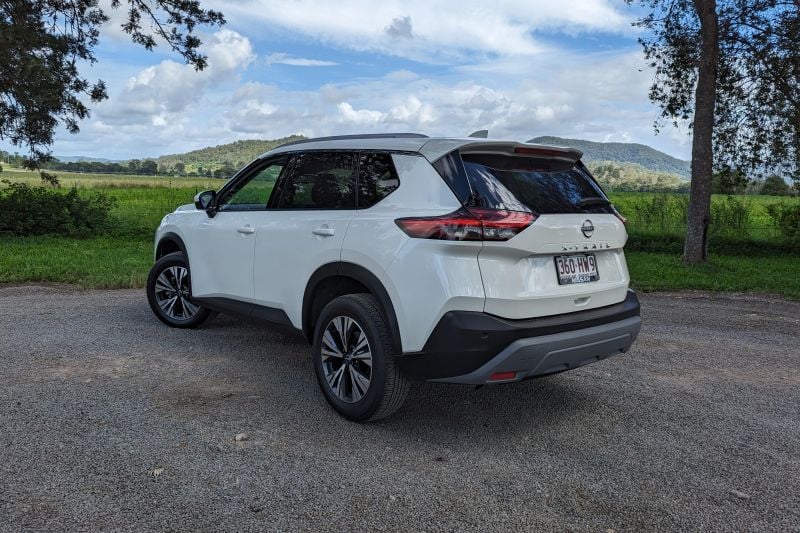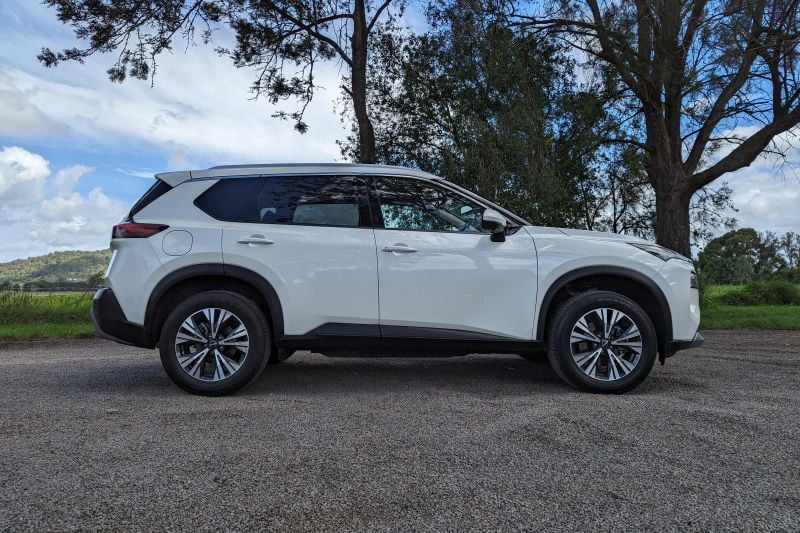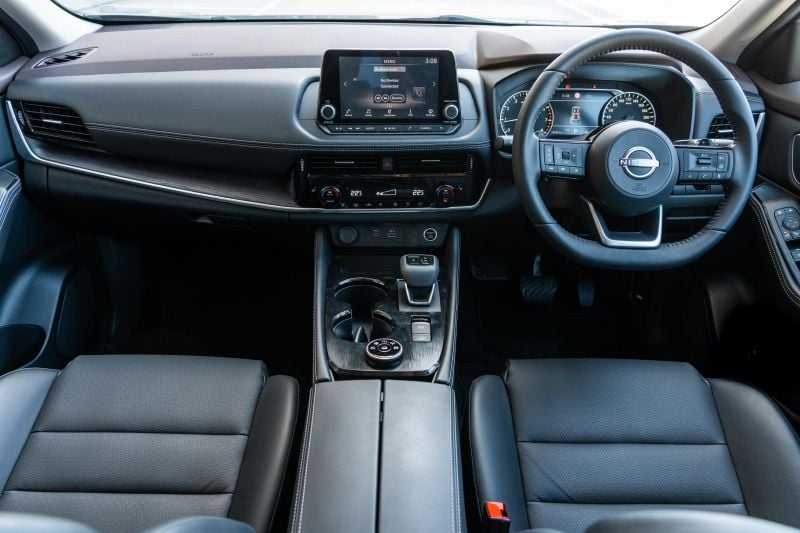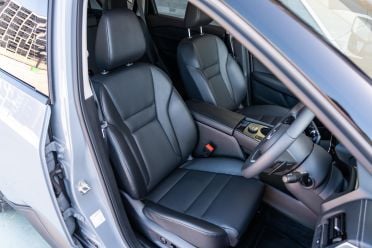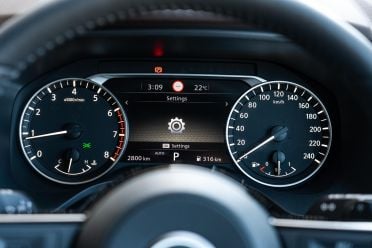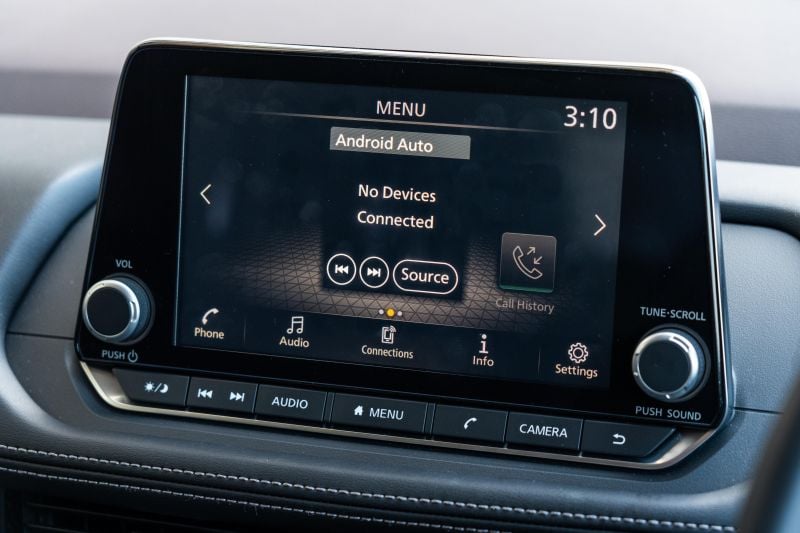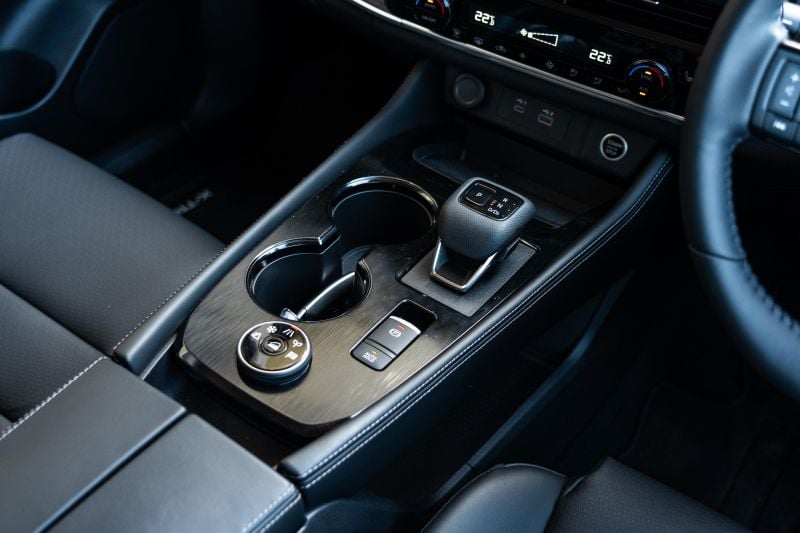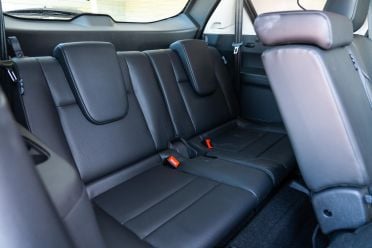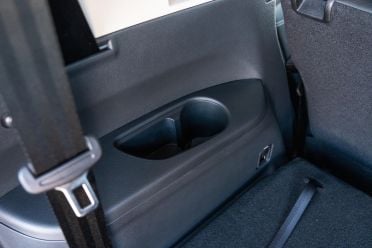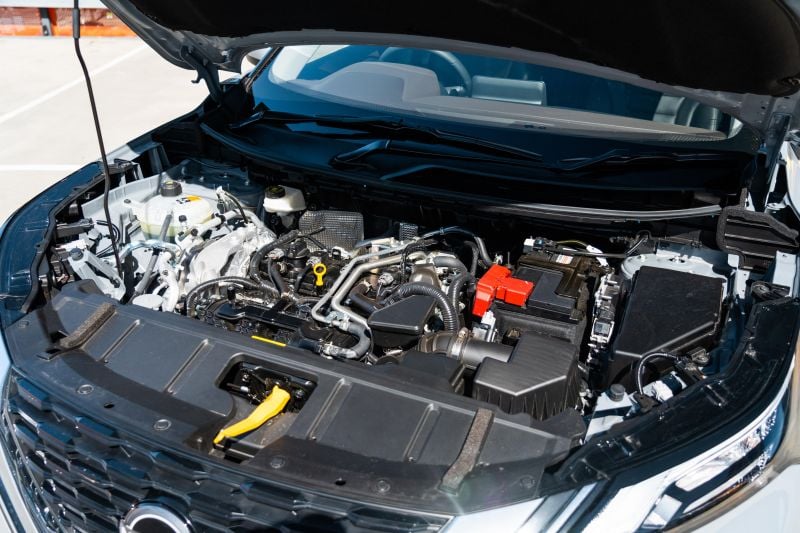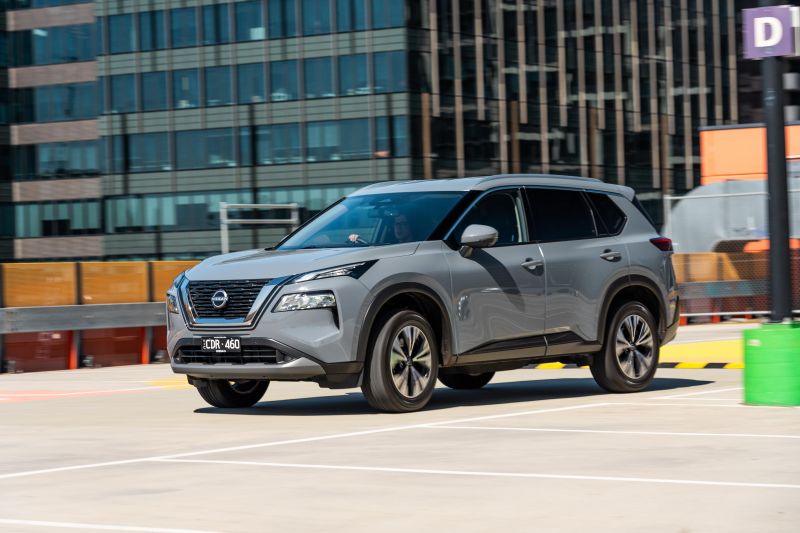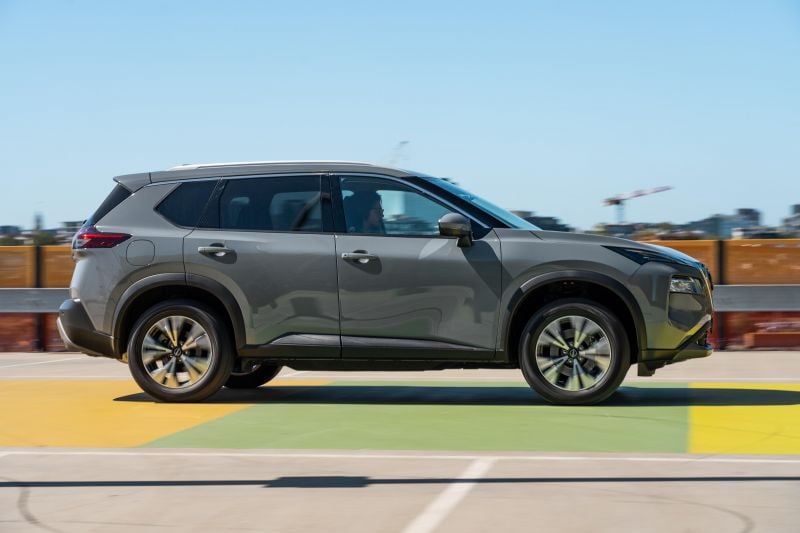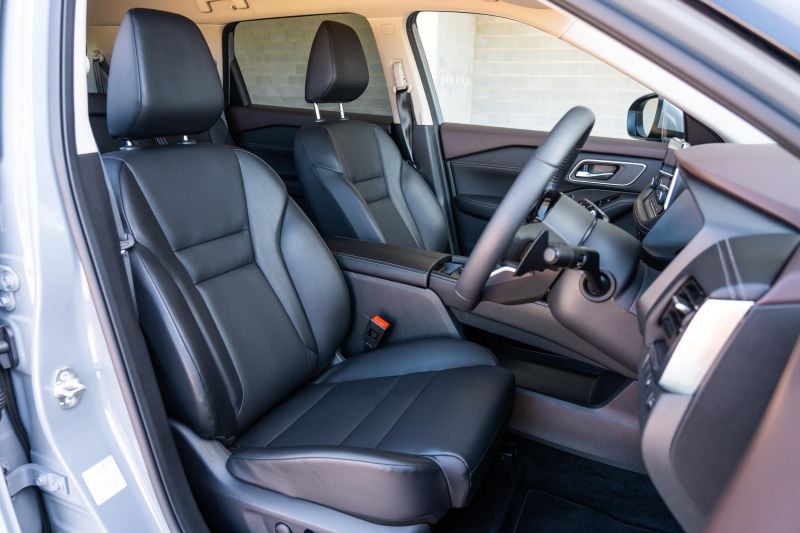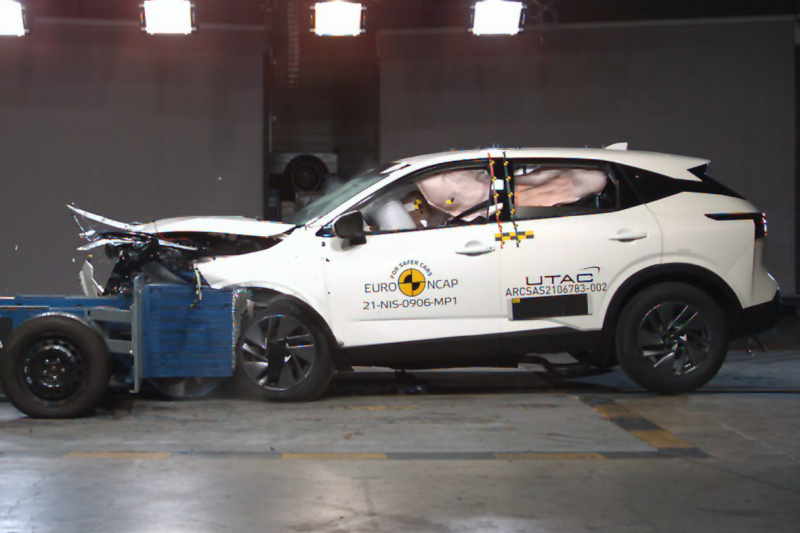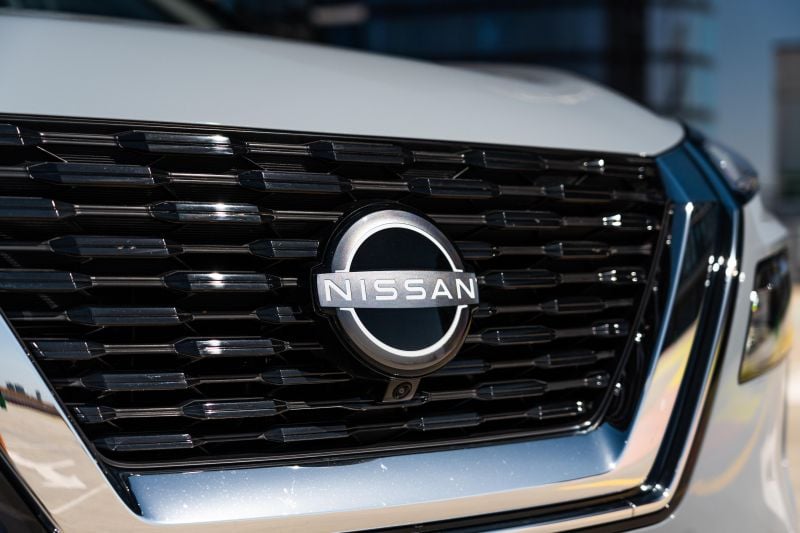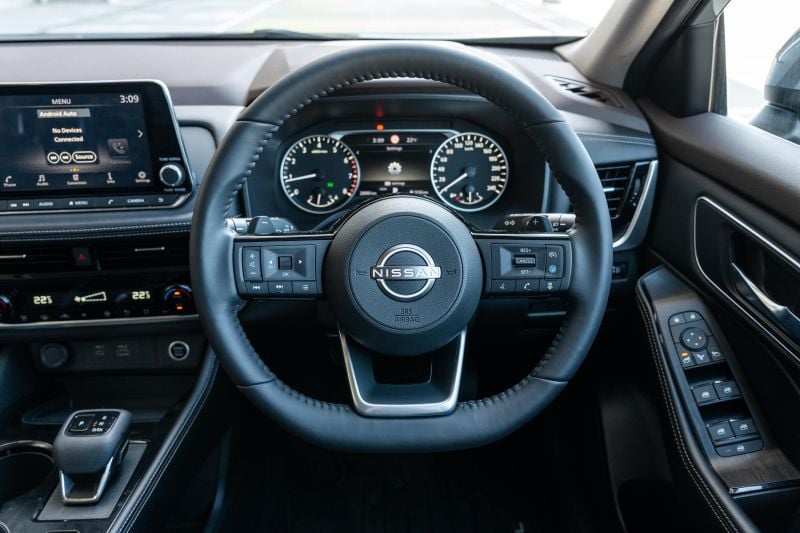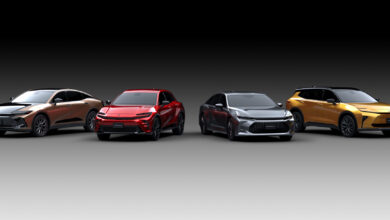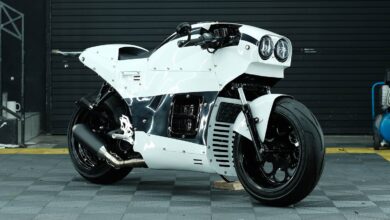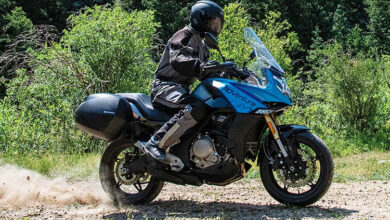2024 Nissan X-Trail ST-L AWD review

Taking a warm jumper with you on a crisp day. Ordering a side salad. Buying a Nissan X-Trail – what do these three things have in common? They’re all very, very sensible.
Buying a mid-sized SUV is already quite a tame decision, as these vehicles typically offer a combination of value, cabin space, and ease of ingress and egress that hits the sensible sweet spot for so many Australians. Particularly those with families.
Few mid-sized SUVs offer a third row of seating, but the X-Trail – along with the Mitsubishi Outlander and Honda CR-V – has this option.
While the X-Trail’s twin under the skin, the Mitsubishi Outlander, offers seven seats across almost the entire range, the Nissan is a little bit stingier.
Want an e-Power hybrid with seven seats? Forget it. That goes for the highest petrol-powered Ti and Ti-L specs as well, which are exclusively offered with five seats.
Nissan also makes its ST, ST-L and N-Trek seven-seaters available only with all-wheel drive.
How does the Nissan X-Trail compare?
View a detailed breakdown of the Nissan X-Trail against similarly sized vehicles.

Nissan
X-Trail
How much does the Nissan X-Trail cost?
Based on a Sydney postcode, the 2024 Nissan X-Trail ST-L AWD has a drive-away price of $50,915. Premium finishes like our tester’s Ivory Pearl add an extra $700.
2024 Nissan X-Trail pricing:
- 2024 Nissan X-Trail ST
- 2WD 5 seat: $37,250
- AWD 7 seat: $40,290
- 2024 Nissan X-Trail ST-L
- 2WD 5 seat: $43,690
- 4WD 7 seat: $46,790
- e-Power with e-4orce 5 seat: $49,990
- 2024 Nissan X-Trail N-Trek
- 2WD 5 seat: $47,290
- 4WD 7 seat: $50,390
- 2024 Nissan X-Trail Ti
- 4WD 5 seat: $50,490
- e-Power with e-4orce 5 seat: $54,690
- 2024 Nissan X-Trail Ti-L
- 4WD 5 seat: $53,490
- e-Power with e-4orce 5 seat: $57,690
Prices exclude on-road costs
The X-Trail faces off with a number of SUVs. To see how it shapes up, use our comparison tool.
What is the Nissan X-Trail like on the inside?
The X-Trail’s interior is functional and well assembled with high-quality materials.
The design too, is modern and largely inoffensive. However, the two-tone black-and-brown treatment for the dash and doors was… a choice. The colours clash and, while we appreciate the contrast, we wish there was another colourway available.
You can step up to the Ti and get an attractive black/pale grey two-tone interior, but we wonder how quickly your children would dirty that.
The materials make this one of the nicer cabins in the segment. The sides of the centre console are finished in soft-touch trim, as are the front door tops, while the centre armrest is nicely padded. That leaves hard plastics only for the lower portions of the dash and doors.
There are attractive stitching details on the dash and doors, inserts with the look of grey open-pore wood-look trim (but a glossy texture), and brushed metal-look trim on the doors and centre console.
There’s some gloss black trim, included somewhat frustratingly on the steering wheel, but this smudge-, dust- and scratch-prone material is kept to a minimum.
Also scarce are blank switches that remind you didn’t buy the top-spec model, with only a handful tucked away to the right-hand side of the steering wheel.
Everything feels sturdily put together, apart from the gear shifter which feels cheap.
The centre stack is fairly minimalist, but you still get physical climate controls.
We’ve become so accustomed to increasingly larger touchscreens that the 8.0-inch unit in the ST-L appears almost small.
The resolution of the cameras is better than past Nissans, if not quite up to the level of the likes of GWM, while the infotainment system itself is easy to navigate with legible graphics. You also have both a USB-A and a USB-C port.
Whip out the world’s smallest violin for me, because the absence of rain-sensing wipers proved quite tedious on a wet week in Brisbane – you need to step up to the Ti for these.
Another gripe is related to the instrument cluster. The analogue gauges are attractive, and the digital screen in between is easy to read. But for some reason, even if you change the screen over to the digital speedometer, the vehicle kept defaulting to a maintenance menu upon startup.
Activating cruise control also gets rid of your digital speedometer, and you have to fiddle around to get your speed readout back on the screen. Thankfully you can switch this off but it’s hidden in the settings menu.
It is possible to have your speed readout and cruise control on screen at the same time, but it’s a little irritating you have to fiddle around to get this. The digital instrument cluster in the N-Trek and up is much better.
Storage up front is excellent. There’s a handy storage shelf under the centre console, suitable for some handbags, while the bottle holders in the doors will fit 1.5L bottles.
The centre console bin has a Mercedes-Benz-style double flap opening and a decent amount of room, and it also features a moulded plastic tray inside if you still find yourself with coins.
Step into the second row and there’s ample space in every dimension. There’s a slight driveline hump, but it’s not so large that it impinges on passenger space.
Amenities include two USB-C outlets, map pockets, air vents, and a fold-down armrest with cupholders. There are two ISOFIX and three top-tether anchor points for child seats.
An occupational hazard of this role is having to wedge one’s self into third-row seats to let you, the reader, know if they can fit adults – and “wedge” is the operative word here, as these are truly kid-only seats.
At 180cm tall, I found my head pressed to the ceiling. Even moving the second row as far forward as possible without making it uncomfortable for someone my height to sit there, it was still painful trying to sit in the farthest row. You’ll find your knees pressed against the seatbacks, with little room to move your feet.
Given it’s awkward to clamber back here too, you wouldn’t want to have your kids’ grandparents sit back here if you’ve got child seats set up in the second row.
There are no anchor points for child seats, so that rules out the smallest of children, and your teenagers would sooner have you hang out with them and their friends than sit back here – best to leave it to smallish children, then.
There are no air vents back here either, like in a Honda CR-V. There aren’t many amenities, period, apart from cupholders.
Nissan only quotes a 465-litre capacity for seven-seat models with the first and second rows in place, measured to the roof. There’s no figure with the third row in place, nor with the second row folded.
With all three rows up, you’ll be lucky to fit a duffel bag, or a few grocery bags. You can drop these rearmost seats by pulling the straps.
A space saver spare wheel is located under the luggage area floor.
What’s under the bonnet?
The latest X-Trail sticks with a familiar naturally aspirated 2.5-litre four-cylinder petrol engine in non-hybrid models.
That’s despite Nissan offering a newer turbocharged 1.5-litre three-cylinder engine in markets like China and the US.
| Model | Nissan X-Trail ST-L 4WD |
|---|---|
| Engine | 2.5L 4cyl petrol |
| Power | 135kW |
| Torque | 244Nm |
| Transmission | CVT |
| Drive type | All-wheel drive |
| Weight | 1666kg (kerb) |
| Fuel economy (claim) | 7.8L/100km |
| Fuel economy (observed) | 8.6L/100km (inner-city, suburban and highway loop) 8.1L/100km (625km mixed driving) |
| Fuel type | 91 RON |
| Fuel tank size | 55L |
The X-Trail faces off with a number of SUVs. To see how it shapes up, use our comparison tool.
How does the Nissan X-Trail drive?
The 2.5-litre four mightn’t be as shiny and new as the turbo three-pot in Chinese and North American models, but it’s still a solid mill.
While its outputs are modest, the CVT helps make it feel surprisingly zippy. It also means you don’t need to work the engine that hard, which is good news as should you rev it, you experience the typical CVT rev flare.
Under hard acceleration, the 2.5-litre gets a bit raucous – it doesn’t have the most pleasant engine note.
Fortunately, if you’re not pushing it too hard the X-Trail is quiet. On the highway, for example, road and wind noise are well-contained.
The X-Trail’s ride is comfortable. Body control is good, even on undulating roads, and impacts are well-absorbed.
The steering doesn’t have a lot of feel, but the weighting is well-judged. It’s light enough to make parking easy, but with enough heft that the X-Trail doesn’t feel like an arcade game to pilot.
Activating Sport mode adds some noticeable weight to the steering. You can also use the paddle shifters to shift between simulated gears.
There’s ultimately nothing sporty about the X-Trail, but it’s dynamically competent.
Body roll isn’t excessive, and it’s well-behaved apart from the occasional squeal of the tyres if you take a corner too quickly and slightly late intervention from the ESC on unsealed roads.
Turning on the adaptive cruise activates the X-Trail’s lane centring, though you can in turn disengage this via a button to the right of the steering wheel. You can also adjust the sensitivity of it.
We used it in both low and medium levels of sensitivity. Particularly in its medium setting, it keeps you well-centred in your lane for the most part, but once in a while it will get slightly confused.
The cruise control has a lot of alert sounds, but they won’t make your ears bleed. It boops when it’s activated, boops when it doesn’t detect lane markings, boops when it detects them again….
We appreciate how the X-Trail will remember if you had auto hold activated when you next start it, and the capless fuel filler is a neat touch.
What do you get?
The ST-L sits towards the bottom of the X-Trail lineup.
X-Trail ST highlights:
- Automatic LED headlights
- Paddle shifters
- 17-inch alloy wheels
- Power-folding, heated mirrors
- Roof rails
- 8.0-inch touchscreen infotainment system
- DAB+ radio
- 6-speaker sound system
- 4 x USB points (1 x USB-A, 1 x USB-C front, rear)
- Apple CarPlay, Android Auto
- 7.0-inch instrument cluster screen
- Fabric upholstery
- Space-saver spare wheel
- AWD and seven seats optional
X-Trail ST-L adds:
- Privacy glass
- 18-inch alloy wheels
- Dual-zone climate control
- Synthetic leather-accented seats
- Heated front seats
- Power driver’s seat
- Fog lights
- Leather-wrapped steering wheel
- Auto-dimming rear mirror
- Sliding rear seats, 40:20:40 folding
- Divide-N-Hide cargo area system
- e-Power with e-4orce optional
- AWD and seven seats optional
Is the Nissan X-Trail safe?
The new X-Trail scored a five-star ANCAP safety rating based on crash testing of its smaller Nissan Qashqai sibling in 2021. The rating covers all models, including petrol and hybrid variants.
The X-Trail scored 91 per cent for adult occupant protection, 90 per cent for child occupant protection, 74 per cent for vulnerable road user, and 97 per cent for safety assist.
Standard features on all grades:
- Autonomous emergency braking (AEB)
- Pedestrian, Cyclist detection
- Junction assist
- Reverse AEB with Pedestrian detection
- Blind-spot assist
- Lane departure warning
- Lane-keep assist
- Traffic sign recognition
- Automatic high-beam
- Adaptive cruise control
- Reversing camera
- Rear parking sensors
- 7 airbags incl. front-centre airbag
ST-L and above add:
- ProPILOT with active lane-centring function
- Surround-view camera
- Front parking sensors
How much does the Nissan X-Trail cost to run?
The Nissan X-Trail range is backed by a five-year, unlimited-kilometre warranty.
Nissan offers six years of capped-price servicing, with the first six services capped at $359, $466, $529, $566, $404 and $693 – or $3017 in total.
You can purchase pre-paid two-, three-, four- and five-year servicing plans, which are priced at $743, $1219, $1728 and $2092, respectively. Notably, Nissan still has servicing intervals of 12 months or 10,000km, while many rivals have 15,000km intervals.
The X-Trail’s service prices aren’t among the cheapest in this segment, and combined with the shorter intervals it makes it costlier to run than an Outlander.
CarExpert’s Take on the Nissan X-Trail
Outside of buyers of performance models like the Volkswagen Tiguan R, we’d wager most mid-sized SUV buyers aren’t going into this segment looking for something exciting.
That’s good news, as the X-Trail is far from exciting, but it doesn’t need to be. What the X-Trail needs to be is a good all-rounder – in this, it delivers.
Ok, so that third row has a very specific use case (small children or large hams). That’s par for the course in this segment, and if you want to fit anybody larger, you’ll need to step up to something like a Hyundai Santa Fe.
The front two rows, however, are extremely spacious and comfortable. The interior is also attractively presented (brown trim aside), logically laid out, and finished in high-quality materials.
The engine mightn’t seem like much on paper, but it proves to be a willing if uninspiring source of motivation on the road, while the X-Trail has a comfortable ride plus steering and handling that should strike the right balance for most mid-sized SUV buyers.
In the cons column are the shorter maintenance intervals and higher service pricing than some rivals. That makes the X-Trail a little less sensible.
It’s also tempting to look elsewhere in the X-Trail lineup. While the pricier N-Trek adds plenty of extra kit, the ST-L e-Power for an extra $3200 brings a much smoother powertrain plus better fuel economy, if at the expense of the third row.
Click the images for the full gallery
MORE: Buy a Nissan X-Trail
MORE: Everything Nissan X-Trail
